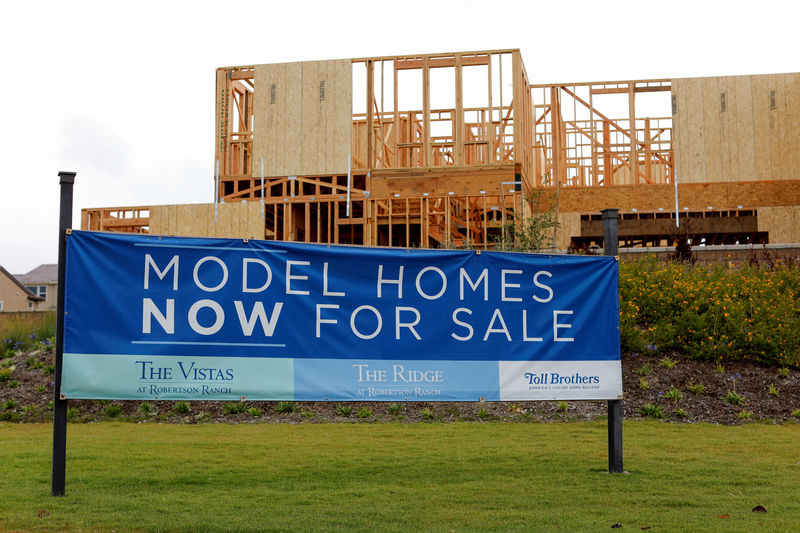 © Reuters. A Toll Brothers housing development is shown in Carlsbad, California
© Reuters. A Toll Brothers housing development is shown in Carlsbad, CaliforniaBy Hari Kishan
BENGALURU (Reuters) – U.S. house prices are set to rise this year at the fastest pace since 2015 and at more than double the rate of pay growth and consumer price inflation for the sixth year in a row, a Reuters poll of property market experts showed on Thursday.
But the rate of house price growth is expected to slow in 2019, underscoring a widely held view among respondents that the strong rise in property prices is not supported by robust turnover and activity, but instead a shortage of supply.
A dearth of property on the market, particularly single-family homes, is pushing already expensive houses further out of reach for many potential buyers at a time when rising mortgage rates are also starting to pinch.
While U.S. property prices have recovered smartly from a meltdown over a decade ago, housing market activity has been relatively sluggish, certainly compared with boom times before the last financial crisis.
That was clear in the second quarter. The U.S. economy expanded at its fastest pace in nearly four years, but wage increases were moderate and sales of existing homes – which make up about 90 percent of supply – fell.
“At least over the next six months to maybe a year, house prices will continue to outrun income and interest rates will keep going up, which means affordability is declining or will continue to decline in the U.S. and that contributes to the slowing,” said Sal Guatieri, senior economist at BMO Capital Markets.
“We are already seeing signs the U.S. housing market is cooling. Demand seems to be softening and looks to have plateaued. Whether you look at new home sales or existing home sales, they are trending below last year’s levels.”
The S&P/Case Shiller composite index of U.S. home prices in 20 metropolitan areas was forecast to rise 6.1 percent this year and 4.7 percent in 2019, according to the poll of over 30 property market experts and economists taken August 17-29.
The latest consensus marks the sixth consecutive time in Reuters quarterly polls in which expectations for the current year have been revised up.
If realized, it will also be the first time since 2015 the annual average U.S. home price rise will be more than 6 percent, which is more than two times the last reported rate of pay growth.
But existing home sales – which at its peak in 2005 was averaging over 7 million units annualized – are forecast to average about 5.5 million units through to the middle of next year.
That is a slight downgrade from about 5.6 million annualized units predicted in a Reuters poll taken in May.
A majority of analysts who answered an extra question on the biggest impediments to a rebound in housing turnover picked expected Federal Reserve interest rate hikes as the main reason, followed by lack of available single-family homes and weak wage growth.
Several also said prices were simply too high.
“Housing is expensive and with (interest) rates rising it will start feeling even more expensive,” noted Robert Brusca, chief economist at FAO Economics. “Incomes simply are not growing fast enough to deal with the strain, so housing will become more expensive and affordable housing will be harder to find.”
Asked to rate affordability on a scale of 1 being the cheapest and 10 the most expensive, the median answer was 7, where it has held for this year and up from 6 in polls last year.
The other concern is the rising costs of building materials driven by U.S. President Donald Trump’s trade tariffs on steel and aluminum and the ongoing rejig of the North American Free Trade Agreement (NAFTA).
“Tariffs are inflationary…but builders are feeling the pinch as well from higher imported cost for Canadian lumber, steel and aluminum,” said Ryan Sweet, senior economist at Moody’s Analytics.
“It’s not just whether or not this escalates but for how long this goes on. If this drags on for an extended period of time then the economic cost will increase as well.”
(Polling by Sujith Pai and Mumal Rathore; Editing by Ross Finley and Chizu Nomiyama)
Source: Investing.com



























